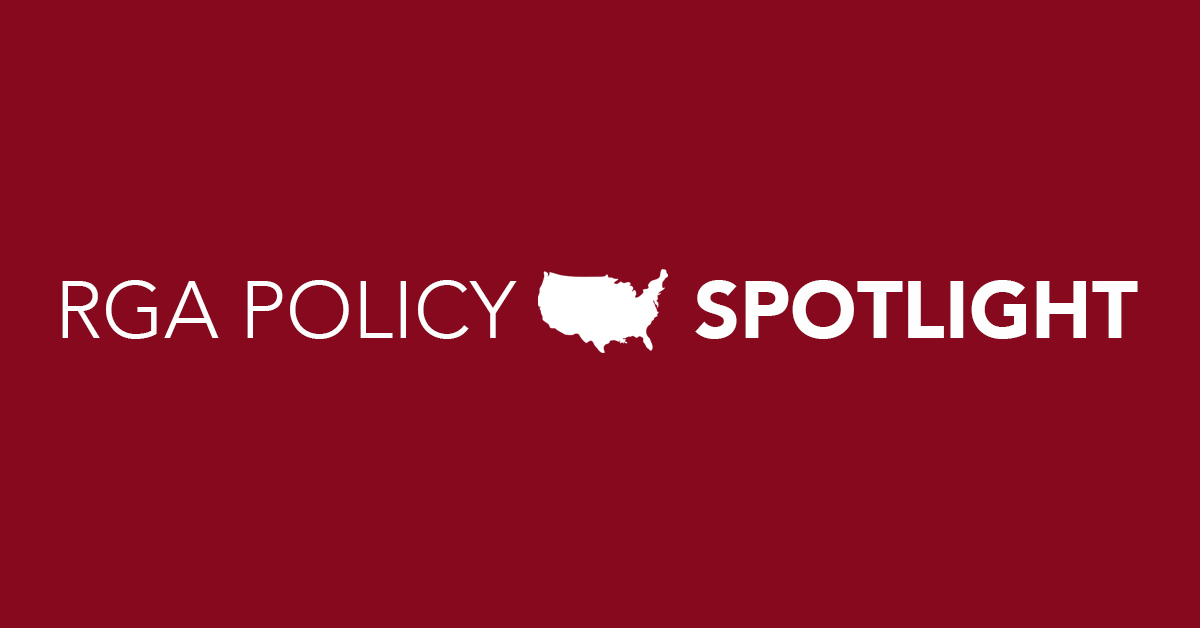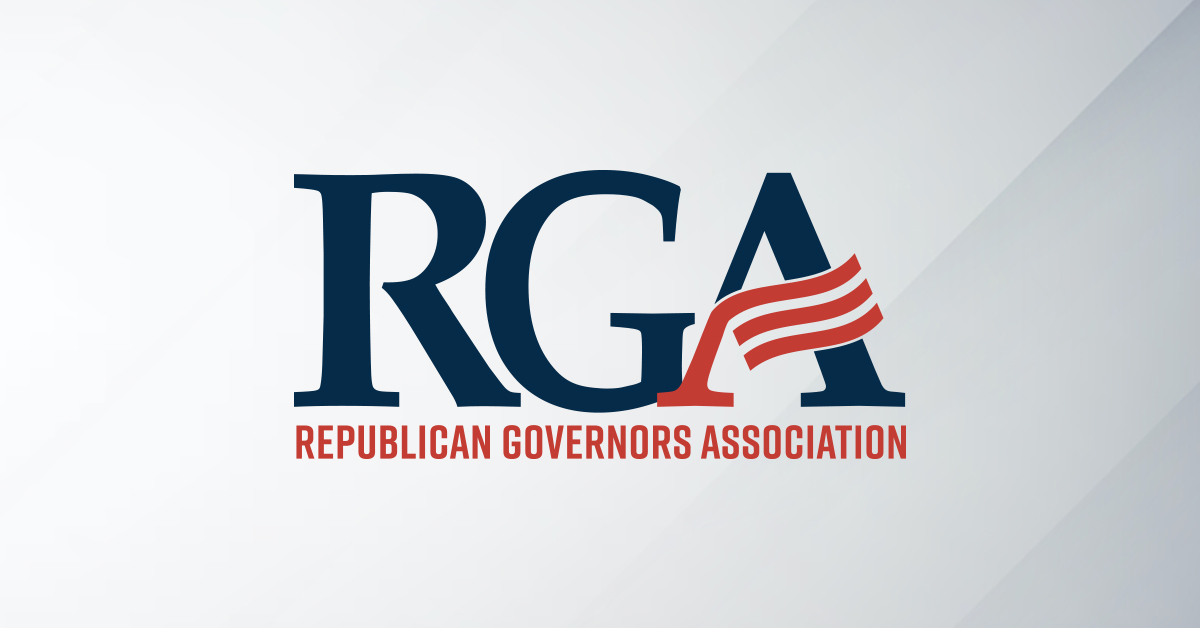
Governors in Republican states across the nation are actively working to provide a quality education for all students, regardless of zip code or income, by expanding access to high-speed internet connectivity. At a time when America’s top health officials are cautioning the risks of children falling behind in the classroom, Republican governors have stepped up to the challenge by leveraging federal funds to close their states’ digital divides.
GOP-led states have distributed CARES Act resources to build on broadband initiatives and guarantee classroom capabilities for students and teachers as they mitigate the impacts of COVID-19. They recognize that even amidst a public health crisis, widespread access to educational opportunities does not have to come at a compromise.
Here are some of the many actions Republican governors have taken to prioritize broadband and education in their states:
Alabama Governor Kay Ivey recently allocated $100 million in CARES Act funds to expand internet services to distance-learning K-12 students in the fall. Her new program, Alabama Broadband Connectivity (ABC) for Students, is providing broadband equipment and service, wireless hot spots, satellite, fixed wireless, DSL, and cellular-on-wheels to those in need.
In Alaska, Governor Mike Dunleavy signed a bill that doubles the minimum internet speed for the state’s K-12 schools to improve connectivity for online classrooms. The law is especially focused on helping rural students and teachers engaging in remote instruction during the COVID-19 pandemic.
Governor Doug Ducey introduced a $440 million plan to assist Arizona schools in reopening safely and preparing for possible remote learning. The governor is setting aside $40 million of his wide-ranging educational package to reduce the digital divide and increase broadband in rural areas.
Governor Asa Hutchinson of Arkansas is building upon his years-long commitment to expanding broadband access statewide by launching the Arkansas Access Point Project. The program unveiled last week is connecting thousands of students to the internet for school, and he provided the Arkansas Department of Education with $10 million from the CARES Act to purchase up to 20,000 Wi-Fi access devices. This week, Governor Hutchinson added another $100 million to Arkansas’ broadband efforts for schools.
Florida Governor Ron DeSantis has dedicated $475 million of the state’s CARES Act allotment to closing the achievement gap for Pre-K-12 schools and higher education. Governor DeSantis remains focused on ensuring students can safely return to their classrooms.
As Georgia prepares for the 20-21 school year, Governor Brian Kemp has reserved $80 million in relief funds for schools, including $29.3 million to better connect students to the internet by providing all schools with broadband signal extenders and building on alternative learning options. The governor also launched a Broadband Availability Map to better identify households lacking high-speed internet.
Bridging the digital divide in Idaho, Governor Brad Little announced $48 million in federal coronavirus relief funds to help bridge the “digital divide” and equip schools with the computers, connectivity, and other resources to ensure successful remote learning.
Governor Eric Holcomb of Indiana is leveraging his $61.6 million in federal Governor’s Emergency Education Relief (GEER) funding to create a grant program designed to improve remote learning techniques and technology. The funding will center on three objectives: making digital learning devices accessible, decreasing internet connectivity gaps, and assisting teachers in adapting to new means of instruction. This is in addition to the $100 million the Holcomb administration is investing to bridge the digital divide for rural Hoosiers.
Making the most out of Iowa’s GEER funds, Governor Kim Reynolds is committing $26.2 million to provide more students with broadband access and enable them to continue their education without interruption. The funds will also go toward providing Wi-Fi hotspots and devices and professional development for educators.
Governor Larry Hogan has been working to increase broadband in Maryland to better equip students and teachers throughout COVID-19 and beyond. After Governor Hogan devoted $20 million for rural broadband and $5 million for urban broadband, he announced another $10 million this week to go toward expanded access for educational purposes.
In Massachusetts, Governor Charlie Baker has been working for the entirety of his administration to close connectivity gaps through the state’s Last Mile Program and Massachusetts Broadband Institute. His most recent effort to increase access for thousands of students and residents provides several communities across the state with high-speed Wi-Fi hotspots.
Governor Tate Reeves of Mississippi is funneling $65 million of federal coronavirus relief money to boost broadband in unserved and underserved areas and alleviate the challenges of distance learning for Mississippians. The governor is awarding grants to fifteen electric cooperatives, which are expected to match the funding for a $130 million total investment into Mississippi broadband.
Building on existing broadband infrastructure in Missouri, Governor Mike Parson set aside $50 million of the state’s CARES Act funds for new initiatives to expand. After listening to the struggles Missourians faced when remote learning during the shutdown, Governor Parson decided to act on expansion in rural regions.
Nebraska Governor Pete Ricketts immediately got to work on a plan for distribution to four key areas when the Cornhusker State received its portion of federal relief dollars. From the start, he was determined to utilize $40 million to increase rural broadband connectivity for Nebraskans.
When Governor Chris Sununu saw New Hampshire becoming increasingly reliant on remote learning and telehealth, he decided to provide relief to working families without hesitation. He devoted $50 million to a broadband initiative that would connect thousands more with high-speed internet during a time of crisis. Governor Sununu added to his commitment last week when he announced over 5,500 New Hampshire properties would receive new connections.
Thanks to Governor Doug Burgum’s background in the technology private sector, he understood the importance of universal internet access when taking office and earned North Dakota a spot as a national broadband leader. When the governor distributed $44.4 million from the CARES Act to North Dakota higher education, it was decided that $35.9 would be spent on technology and resources as the state prepares for the fall semester.
Governor Mike DeWine streamlined the process of connecting more students in Ohio to the internet when he partnered with BroadbandOhio, InnovateOhio, and the Ohio Department of Transportation to create a new system for broadband providers to request permits. Governor DeWine further allotted $50 million to school districts to match grants for hotspots and devices intended for distance learning.
This week, Governor Kevin Stitt took action in Oklahoma to help schools as they account for virtual classrooms and look to offer equal opportunities for students across the state. He announced his Learn Anywhere Oklahoma plan, which uses federal coronavirus funds to provide statewide digital content for core and advanced classes to K-12 students.
When issuing spending recommendations to the South Carolina Legislature, Governor Henry McMaster and his accelerateSC Task Force made sure to include efforts to overhaul statewide broadband and provide access to all who are in need. They insisted South Carolina spend $100 million on broadband, develop a long-term plan for the state, and buy at least 100,000 hotspots to give to students for at-home learning.
Governor Kristi Noem had already started her broadband initiative in South Dakota last year by securing funds from the state. She has now gained another $5 million from the legislature while spending $6.5 million from the CARES Act, and is putting even more South Dakotans at ease during a time where they are increasingly reliant on high-speed internet.
Alongside the Tennessee Department of Economic and Community Development, Governor Bill Lee has announced $19.7 million in broadband accessibility grants. Through this initiative, Governor Lee is offering service to an additional 31,000 Tennesseans and 12,700 households and businesses.
Governor Greg Abbott has officially launched Operation Connectivity, his plan to deliver statewide internet access and devices to Texas schools, families, and students. Governor Abbott’s initiative is being led by his Operation Connectivity Task Force and will bridge the digital divide for hundreds of thousands of students.
Despite state budget cuts in Utah, Governor Gary Herbert oversaw a 1.8% increase in state funding for schools. To assist with online instruction, the governor dedicated $125 million in CARES Act funding to boost broadband and digital broadcasting.
Governor Phil Scott is helping the people of Vermont connect to broadband with a $2 million assistance program: The Line Extension Customer Assistance Program (LECAP). LECAP is set to offer $3,000 per household to allow Vermonters to access telecommunications lines and offer relief to teachers and students statewide.
In West Virginia, Governor Jim Justice is setting up Wi-Fi hotspots across the state to provide students with the option of virtual learning. He has devoted $6 million to install over 1,000 hotspots at schools, libraries, and state parks.
Wyoming Governor Mark Gordon has utilized the Cowboy State’s portion of federal coronavirus relief funds to expand high-speed internet access by accepting proposals from broadband providers across the state to install new services. His goal is to reach as many unserved and underserved areas as possible and he is committing $50 million to the initiative.
While the support Republican governors have provided for broadband and distance learning was in response to COVID-19, the boosted internet access will benefit students for years to come. Republican-led states remain focused on ensuring all children receive a superior education and are leading the charge toward long-term digital equity.





See the latest videos from RGA
Watch our videosI want to congratulate @POTUS, Senators @berniemoreno and @SenJonHusted, and Ohio’s Congressional delegation for today e…
Hardworking Mississippi taxpayers are the winners today!!
Thank you @SpeakerJohnson!
Thank you @RepTrentKelly @RepMichael…
Follow RGA on Twitter
Follow RGA on Facebook